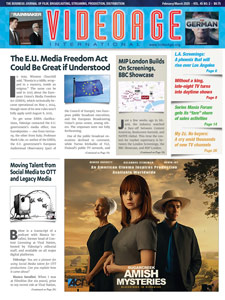At PBS, the U.S.’s public broadcasting system–whose 350 member TV stations combine to reach nearly 100 million American viewers each month–a constant challenge is figuring out how to move forward successfully. Paula Kerger (pictured above), president and CEO of PBS, has continuously tried to keep up with all the changes that have impacted the public television network since she started there 10 years ago.
“The biggest change, obviously, is around the possibilities technology has offered up,” she acknowledged at the most recent Television Critics Press Tour in Los Angeles. “To have gone from 10 years ago–where we were so wholly reliant on broadcast schedules and hoping that we could connect to people at times that we set–to now, when we are moving into an environment where people can connect to content on their own terms and where they choose to connect–has really been the biggest change.”
With the newly inaugurated President Donald Trump it is uncertain how the new administration may affect federal funding for public broadcasting. Nevertheless, Kerger will be working to make sure that PBS stations are strong and meeting the needs of their communities.
“I travel all over the country and I’ve been in almost every state,” she said. “Three, I’m missing: Alaska, Hawaii, and South Dakota. At every place I go, I meet with people and I do a lot of interviews. And I’m struck by the fact that, in many communities, the last remaining locally owned and operated broadcasters are the public stations. So, as we look out over the next 10 years, the thing that is going to be the most important is to ensure, in the midst of all of this media change, that our stations continue to be relevant and important in their communities, doing the job that no one else is doing. [This job] is to ensure that there’s a media organization that is looking at them as citizens and not as consumers.” (By Susan L. Hornik in Los Angeles)












Leave A Comment